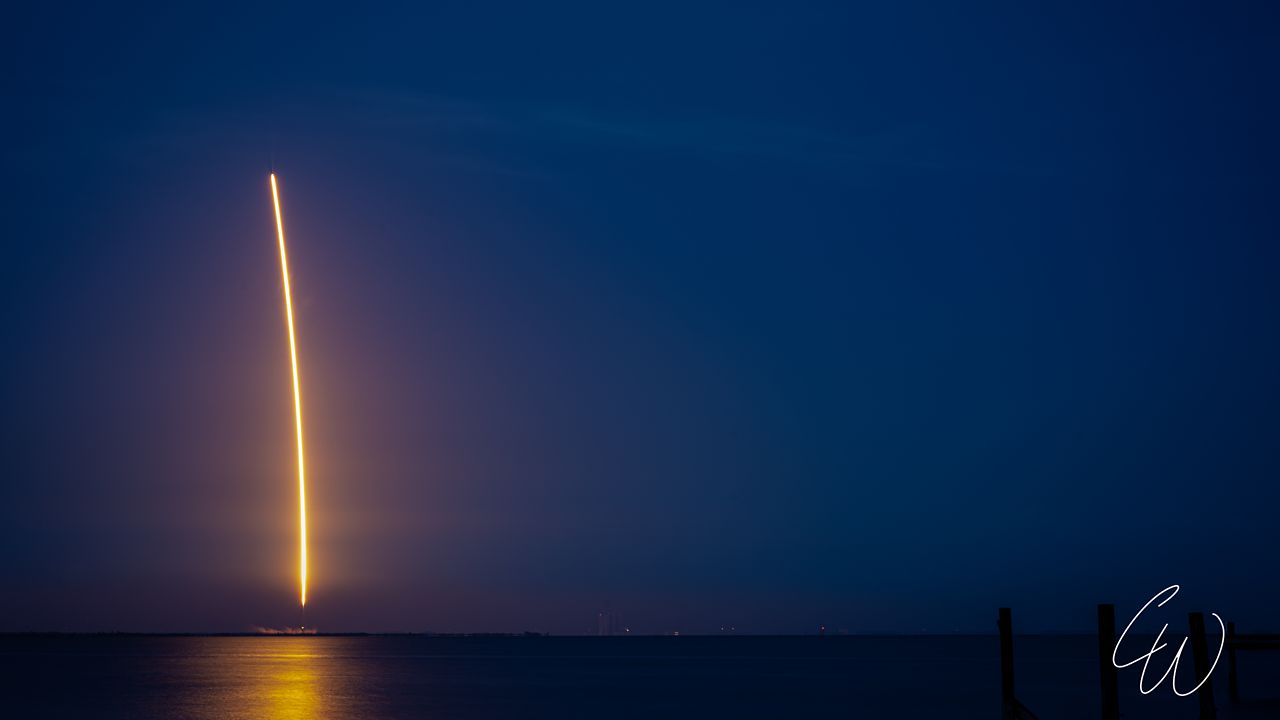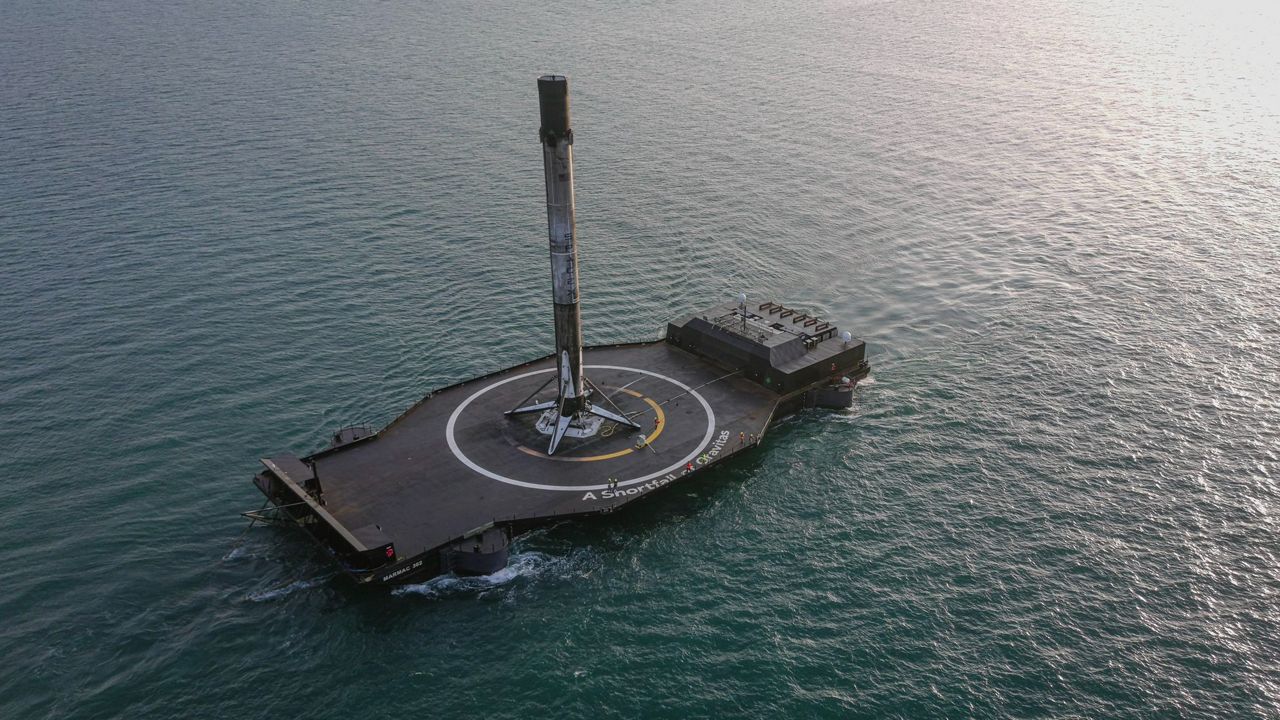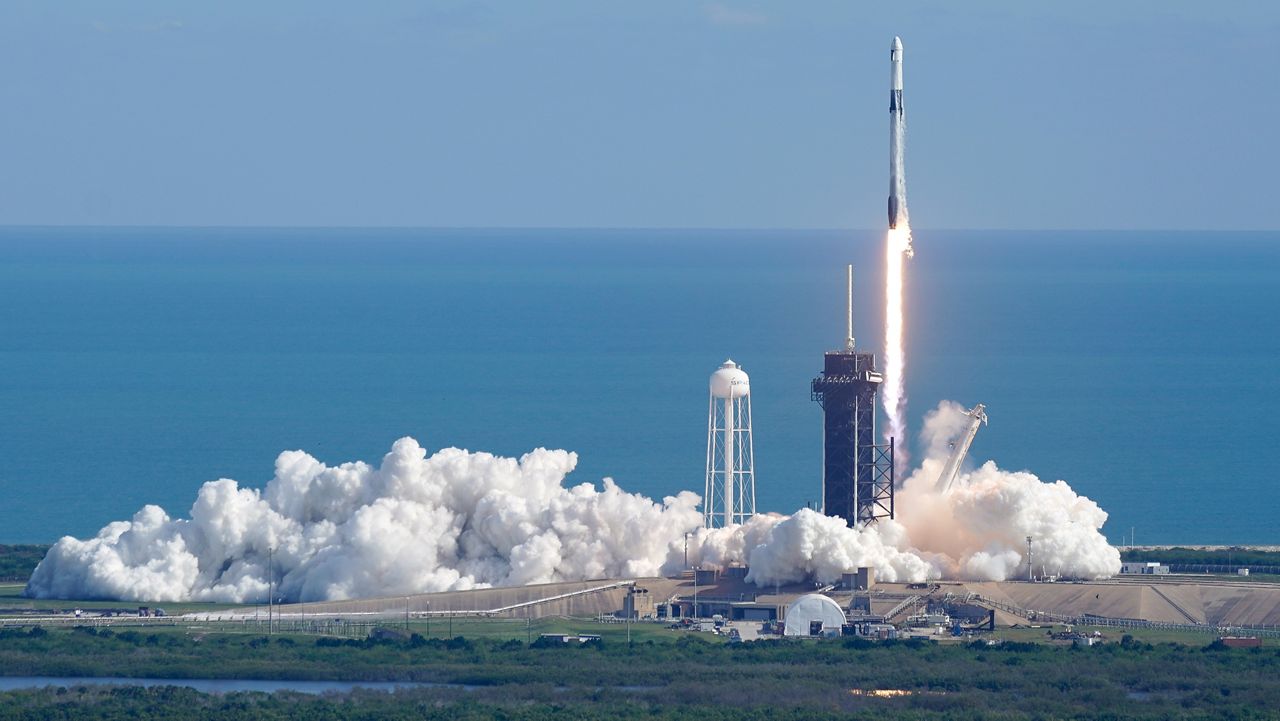KENNEDY SPACE CENTER — SpaceX celebrated its commercial resupply service mission contracted with NASA with its 25th launch on Thursday night.
What You Need To Know
- The launch window opens at 8:44 p.m. EDT on Thursday
- SpaceX has been doing CRS missions for NASA since 2010
- Watch the launch LIVE on Spectrum News
🚀@SpaceX’s #Falcon9 rocket lifted off from the #KennedySpaceCenter to bring the #Dragon to the @Space_Station. Onboard the Dragon are supplies & experiments for those on the #InternationalSpaceStation.
— Anthony Leone (@AnthonyLeone) July 15, 2022
You can learn more about them in my story @MyNews13 https://t.co/9yrJmOjUfV pic.twitter.com/m00ugF1uFQ
SpaceX’s Falcon 9 rocket sent the company’s Dragon spacecraft heading to the International Space Station with supplies and experiments after it lifted off from Launch Complex 39A at the Kennedy Space Center.

The launch window opened at 8:44 p.m. EDT, and conditions were favorable for an immediate launch.
The 45th Weather Squadron gave the Thursday evening launch 70% chance of good liftoff weather.
Once stage separation takes place, the Falcon 9 rocket — which has been used in CRS-22, Crew-3 and Crew-4 missions — landed on the droneship “A Shortfall of Gravitas” that is stationed in the Atlantic Ocean.

About the mission
Spectrum News reporter Greg Pallone and Spectrum News digital news editor Anthony Leone briefly talk about the mission and SpaceX's history with CRS.
Originally, SpaceX’s 25th cargo mission to the ISS was supposed to happen on Friday, June 10, but elevated vapor readings forced officials to postpone the launch.
In a previous interview with Spectrum News, NASA explained what happened and what was being done.
The launch was supposed to take place Sunday, July 10, but NASA said more time was needed for inspections and repairs.
“The new target launch date supports ongoing Dragon spacecraft inspections as well as repair and replacement of any components that could have degraded by exposure to mono-methyl hydrazine (MMH) vapor found during testing in early June,” NASA stated in a press release.
In addition to food and other supplies, the Dragon capsule is also carrying out various experiments.
Some of these experiments include investigating and mapping how Earth’s dust can impact the planet’s climate, weather and vegetation.
Another experiment will look into human immune cells and how they are affected by microgravity.

And astronauts will carry out another interesting experiment: How microgravity impacts the creation of concrete.
Once people have returned to the moon and eventually head to Mars, they will need to ultimately build habitats with what is available: Lunar and Martian dirt.
But before that can be done, astronauts aboard the ISS will make six concrete bricks in microgravity to see how they compare to bricks made on Earth.
Eventually, researchers will determine what type of changes will need to be made before the construction of concrete bricks can be done on Earth’s lunar sister or the Red Planet.

History of SpaceX's CRS
Thursday night’s launch is a milestone for the private space company: The 25th commercial resupply services (CRS) mission.
In a contract awarded by NASA, SpaceX has been delivering cargo, food, supplies and experiments to the International Space Station for nearly 10 years now.
The first one took place in October 2012, and the CRS missions have had both good and not-so-good results for SpaceX.
For example, in CRS-1, while the launch was successful, there was an engine anomaly on the Falcon 9 rocket.
During the CRS-2 in 2013, the Dragon capsule was having thruster issues, as SpaceX President Elon Musk tweeted out.
Issue with Dragon thruster pods. System inhibiting three of four from initializing. About to command inhibit override.
— Elon Musk (@elonmusk) March 1, 2013
Eventually, SpaceX was able to regain control of all four thrusters and the Dragon was able to dock with the ISS, although it was a day later.
Another mishap occurred in 2015 during the CRS-5 mission, when that Falcon 9 rocket tried to land on a droneship but was destroyed during a “hard” landing.
Rocket made it to drone spaceport ship, but landed hard. Close, but no cigar this time. Bodes well for the future tho.
— Elon Musk (@elonmusk) January 10, 2015
Perhaps the biggest launch failure occurred in June 2015 during the CRS-7 mission, when the Falcon 9 rocket and Dragon space capsule were destroyed 139 seconds into the flight.
At the time, SpaceX stated it was believed that a strut was to blame for the destruction of both the rocket and capsule. It was designed to withstand 10,000 pounds of force, but failed at 2,000 pounds.
In an independent accident report by NASA, it was determined that SpaceX chose to use a stainless-steel eye bolt made from an industrial-grade material instead of an aerospace-grade material.
“This design error is directly related to the Falcon 9 CRS-7 launch failure as a ‘credible’ cause,” the report concluded.
However, the CRS missions have provided many firsts for SpaceX: In 2016 during the CRS-8 mission, following stage separation, the Falcon 9 rocket landed vertically on the droneship “Of Course I Still Love You” stationed from the Florida coastline. This marked the first successful droneship landing.
In fact, it was CRS-9’s 2016 mission when a Falcon 9 rocket landed at Landing Zone 1 at Cape Canaveral, the second successful ground landing.
Spectrum News reached out to SpaceX for its reaction to the 25th CRS flight, but the company has not yet replied.



